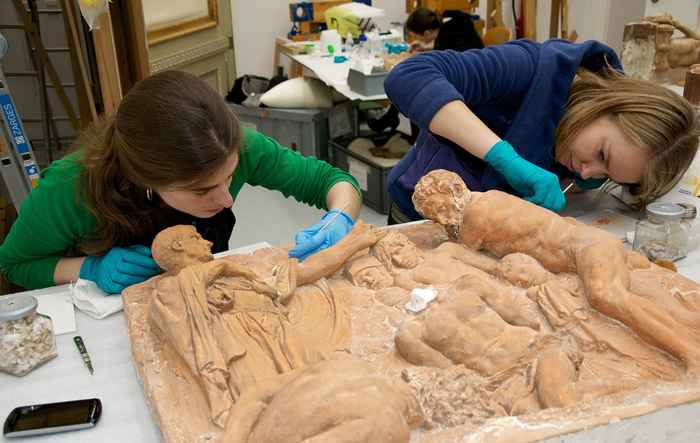Glass and Ceramics

The Art of Earth, Wind and Fire
In the glass and ceramics programme, the students have the opportunity to work on a wide range of materials - from fragile archaeological Egyptian faience to monumental outdoor sculpture and delicate Chinese porcelain in museum collections, to antique mirrors in historic houses. The students research and treat objects from Dutch museum collections from early on in the course. From the beginning, the conservation theory is directly related to objects, supported by lectures, literature seminars and workshops which are often given by international specialists. Through visits to museum collections, art studios, and conservation workshops the students are able to develop a professional network and understand conservation issues in a broader context. The staff’s international connections provide opportunities to undertake internships and pursue research throughout the world.